Duke Energy invited local media outlets to view an excavated coal ash basin at its Lake Julian plant on Tuesday, Oct. 25. According to the utility, all coal ash stored in the site’s 37-acre 82 basin (so called because it was placed into service in 1982) has been excavated and removed from the site. The basin, which sits behind an impoundment dam on the eastern side of Interstate 26 close to the Skyland exit, will become the site of the utility’s planned new natural gas-fired electricity generating plant. Construction will begin in 2017, with the new plant scheduled to begin service in 2020.
Workers operating earth-moving equipment on the floor of the basin are currently stabilizing the area to prepare it for further site work, Peoples says. The bottom of the basin sits as much as 85 to 90 feet below the top of the dam at its deepest points. That will soon change: Fill from the dam will be moved into the basin to raise the level of the area before construction begins on the new plant.
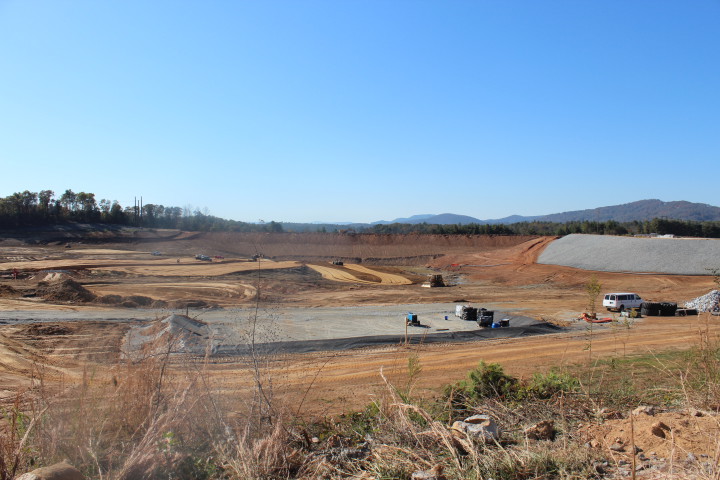
More than 4 million tons of coal ash excavated from the 82 basin and new ash production served as structural fill for a new runway project just across the interstate at the Asheville Regional Airport. Completed in 2015, the fill areas were double-lined and capped with impermeable material. Monitoring wells and leak detection equipment will keep tabs on any potential groundwater contamination at the site, according to Danielle Peoples, spokesperson for Duke Energy.
Ash stored in the 41-acre 64 basin (which contains material dating from the plant’s opening in 1964), along with ash produced by current operations, is being transported to landfills in Homer, Georgia and at the Duke Energy Cliffside plant and landfill in Mooresboro. Those landfills are fully lined and monitored for leakage, Peoples explains. As required by state mandate, the 64 basin will be fully excavated by 2022; its site will be reused for a large-scale solar farm, says Jason Walls, Duke’s Asheville-area community and government relations manager.
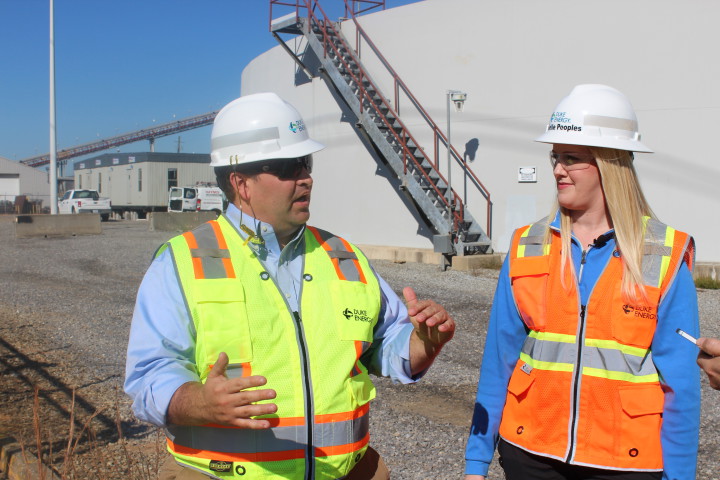
Duke Energy is actively excavating at six of 36 coal ash sites in its Carolinas region. In addition to the 64 basin in Asheville, the other sites where ash is being removed are located in Wilmington, Mt. Holly, Dan River near Eden, Mooresboro and Belton, S.C.
On average, says plant manager Gary Whisnant, the Lake Julian facility burns 1,500-2,000 tons of coal per day; about 10 percent of that volume (or about 150-200 tons per day) is left over as coal ash. The bulk of that material takes the form of fly ash, which is mostly composed of common elements such as silicon, iron and calcium. Less than 1 percent of fly ash contains trace elements such as arsenic, selenium or mercury, according to materials shared by Duke Energy.
Peoples says Duke Energy seeks to reuse the coal ash in beneficial applications — like the Asheville Airport structural fill and as a replacement for Portland cement in concrete production — wherever possible. Gypsum, a by-product of the “scrubber” process that captures contaminants from emissions at the plant’s smokestack, is reused in products like wallboard. Nationally, says Henry Duperier, site director for the Lake Julian ash basin closure effort, at least 37 percent of newly produced coal ash is going to beneficial uses. Newly produced ash is easier to use in these kinds of recycling applications, he explains.
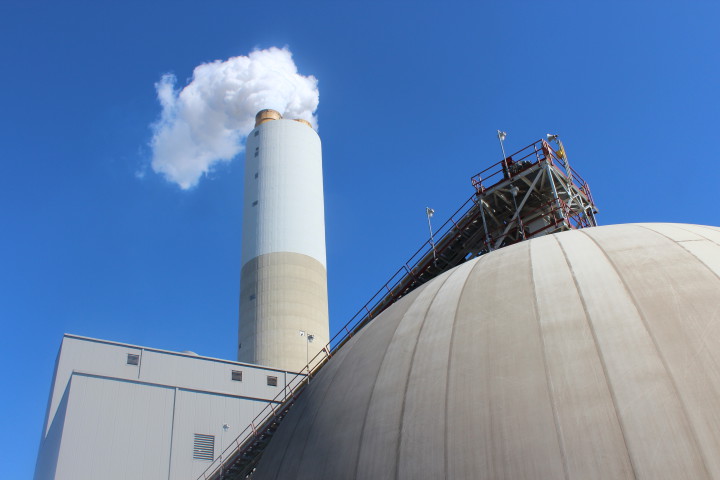
Where possible, Peoples says, Duke Energy prefers to landfill coal ash on the site where it is produced. The 1,000-acre Lake Julian site isn’t large enough to accommodate an onsite landfill, she says, especially since the lake occupies about 320 acres of the property. The Asheville coal ash ponds were designated high-risk, Peoples and Walls explain, because of their proximity to I-26. “That is a major corridor for commerce in this region,” Walls says. A breach or accident at the Lake Julian coal ash ponds could block I-26, making the impact of a spill due to a seismic event or other disaster potentially enormous.
On Feb. 29, state regulators approved the portions of Duke Energy’s Western Carolinas Modernization Project that will add two 280 megawatt natural gas-fired generating units at the Lake Julian site. A third unit was denied, with utility regulators signaling an intent to wait to see whether energy demand reduction efforts might make its construction unnecessary. The existing 376 megawatt coal-fired generators will be decommissioned and eventually removed. Two existing combustion turbines fired by natural gas and now used as “peaker” units for periods of higher demand will remain in service.

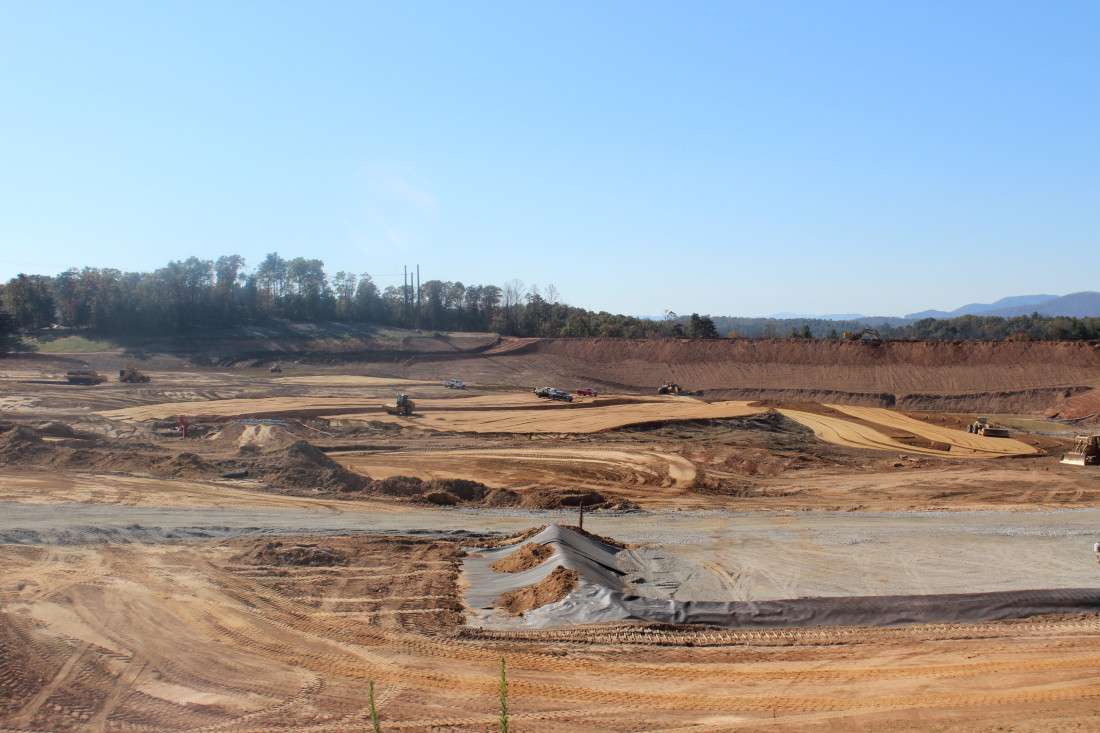

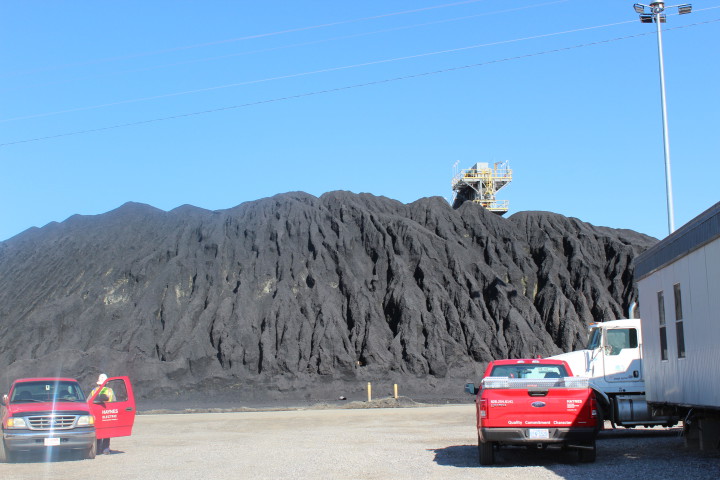

New renewable energy facilities worldwide surpassed fossil fuels for the first time last year, and we’re supposed celebrate a new local plant that will run on fracked natural gas? We should be ashamed that we’re lashing another couple of generations to this dirty energy source.
Renewable energy installations surpass fossil fuels in record year for green power generation
http://www.independent.co.uk/news/business/news/renewable-energy-surpasses-coal-source-of-electricity-solar-wind-power-generation-a7379516.html
Natural gas is a very clean energy source. Combustion byproducts are carbon dioxide and water vapor. There’s no renewable energy source that can compete with natural gas in this area. Even if we were 100% on renewables, extremist chicken-little environmentalists would still complain about something.
…And as we all know, there are absolutely no negative side-effects from extracting the gas from the ground.
This message brought to you by the American Petroleum Institute.
Granted, that issue needs to be improved.
Do you think that the manufacturing of batteries and solar cells is clean?
there is NOTHING clean about manufacturing batteries and solar cells!
LOL, or in their disposal. But let me guess, the enviro whacks will do the same as say their unwanted electronics and brag about how green they are. Collect them at “recycle” centers that simply ship them to China where the valuable metals are taken out and the rest is discarded in the most environmentally unfriendly way. Out of sight, out of mind lulz.
That btw is why the US imports from China rare earth metals, which are essential to solar and battery applications . The US has plenty of rare earth reserves, but cannot process them because of restrictive environmental regulations. The dirty work is done in China, out of sight, out of mind.
And then there’s wind power that doesn’t work very well in WNC and can kill birds on a massive scale. And hydropower, that is probably the cleanest form of electrical energy available and work wells in the mountains, but environmentalists have shut down the expansion of in this country. And nuclear, which is ultimately the deadliest, dirtiest form available. What else is there?
we know this much for sure… natural gas production is the now largest contributor to methane emissions to the earth’s atmosphere….. and that’s going to make current CO2 emissions/levels at 400ppm look, well, quaint, in the not so very distant future. Big problems coming…. have fun with all of it… maybe you all can bicker your way out of it…. lol ;(
LOL I see China is continuing to build excess coal fired power plants. But we know, it’s all white male America’s fault lulz. America bad. American Bad. America bad…………..so let’s make it even harder to make living here for those that follow the rules and of course subsidize the rest. Legal or illegal.
“…natural gas production is the now largest contributor to methane emissions to the earth’s atmosphere”
This is simply not true.
Shows off? THAT is something to be proud of?